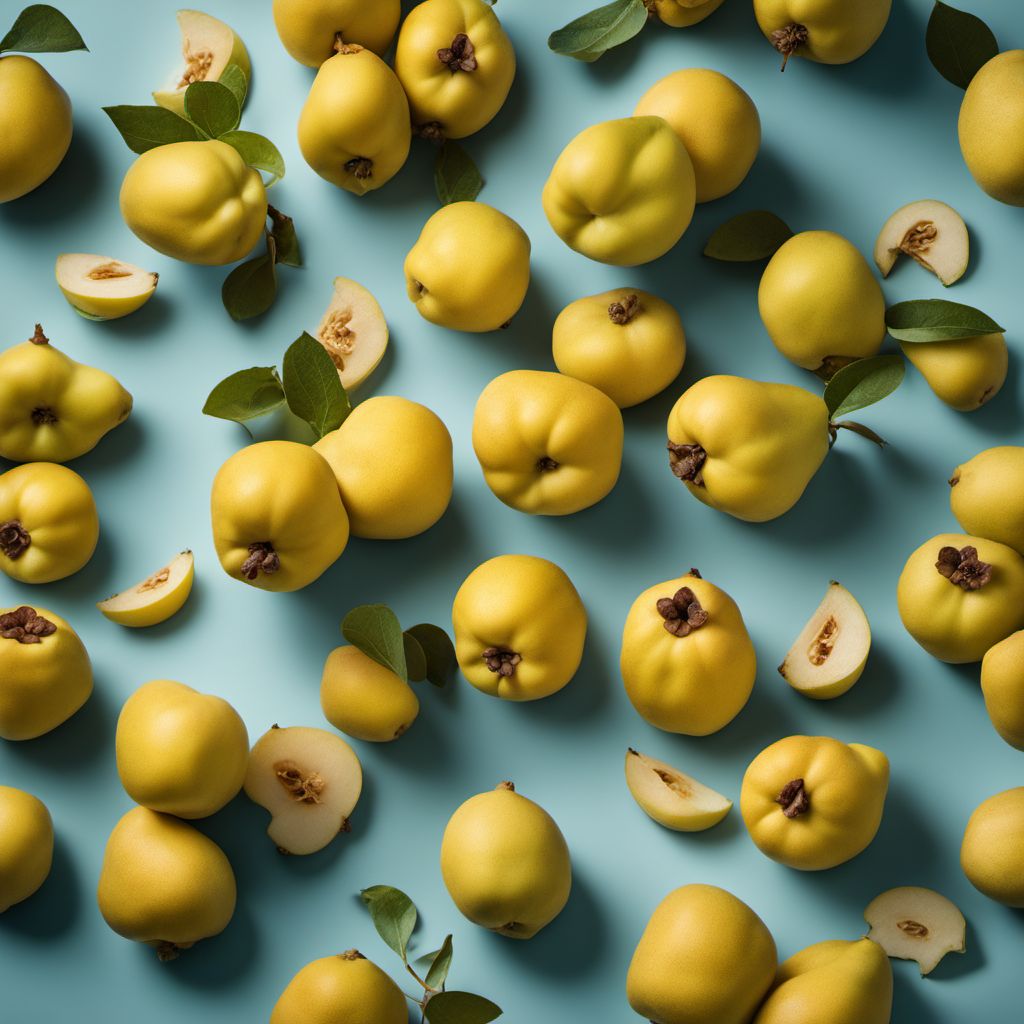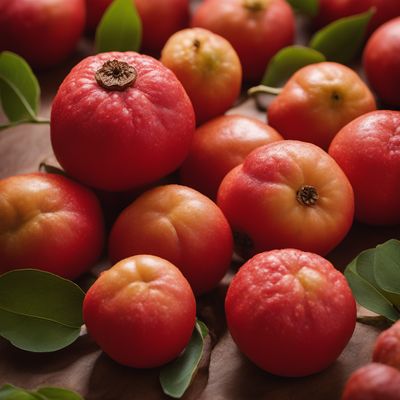
Ingredient
Quinces and similar-
The Golden Apple: Quinces and Their Kin
Quinces and similar fruits, including medlars and pomegranates, belong to the Rosaceae family and are characterized by their golden-yellow color, fragrant aroma, and firm texture. Quinces have a tart and slightly floral flavor, while medlars have a sweet and tangy taste. Pomegranates are known for their juicy, ruby-red arils that burst with a sweet and tart flavor. These fruits are often used in both sweet and savory dishes, adding a delightful twist to various recipes.
Origins and history
Quinces have a long history dating back to ancient Greece and Rome, where they were highly prized for their fragrance and flavor. They were considered a symbol of love and fertility and were often used in wedding ceremonies. Medlars, on the other hand, have been cultivated since ancient times and were popular in medieval Europe. Pomegranates have a rich history in many cultures, including ancient Persia and Egypt, where they were revered for their medicinal properties and symbolic significance. Today, quinces, medlars, and pomegranates are cultivated in various regions around the world, including Europe, Asia, and the Americas.
Nutritional information
Quinces and similar fruits are a good source of dietary fiber, vitamins, and minerals. They are particularly rich in vitamin C, antioxidants, and phenolic compounds, which contribute to their health benefits. Quinces and medlars are also low in calories and fat, making them a nutritious addition to a balanced diet. However, individuals with allergies to Rosaceae family fruits, such as apples or pears, should exercise caution when consuming these fruits.
Allergens
Quinces and similar fruits may cause allergic reactions in individuals with allergies to Rosaceae family fruits, such as apples or pears. It is important to consult with a healthcare professional if you have known allergies or sensitivities.
How to select
When selecting quinces, choose fruits that are firm and free from bruises or blemishes. They should have a golden-yellow color and a fragrant aroma. Medlars should be soft and slightly wrinkled, indicating ripeness. Pomegranates should have a vibrant red color and feel heavy for their size. Avoid fruits that are overly soft or have moldy spots. It is best to purchase these fruits when they are in season for optimal flavor and quality.
Storage recommendations
Quinces and similar fruits should be stored in a cool, dry place away from direct sunlight. They can be kept at room temperature for a few days, but for longer storage, refrigeration is recommended. Quinces and medlars can be stored in the refrigerator for up to 2-3 weeks, while pomegranates can be stored for several weeks to a few months, depending on their ripeness.
How to produce
Quinces, medlars, and pomegranates can be grown in home gardens or orchards, provided the appropriate climate and growing conditions are met. They require well-drained soil, full sun exposure, and regular watering. Quinces and medlars are typically grown from grafted trees, while pomegranates can be grown from seeds or cuttings.
Preparation tips
Quinces can be used in a variety of sweet and savory dishes, including jams, jellies, pies, tarts, and stews. They can also be poached, roasted, or used to make quince paste, a popular accompaniment to cheese. Medlars are often eaten when fully ripe, either fresh or used in preserves, desserts, or liqueurs. Pomegranates can be enjoyed by simply eating the arils as a snack or used in salads, sauces, desserts, and beverages. When extracting the arils, it is important to handle the fruit carefully to avoid staining.
Culinary uses
Quinces, medlars, and pomegranates are commonly used in various cuisines around the world. Quinces are particularly popular in Mediterranean and Middle Eastern cuisines, where they are used in both sweet and savory dishes. Medlars are often enjoyed in European countries, such as France and England, while pomegranates are widely used in Middle Eastern, Indian, and Persian cuisines.
Availability
Quinces are commonly cultivated in Europe, particularly in Spain, Turkey, and Portugal. Medlars are primarily grown in Europe, with France being a major producer. Pomegranates are cultivated in many regions, including the Middle East, India, Iran, and the United States. They are also grown in Mediterranean countries, such as Spain and Turkey.


